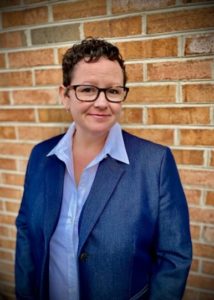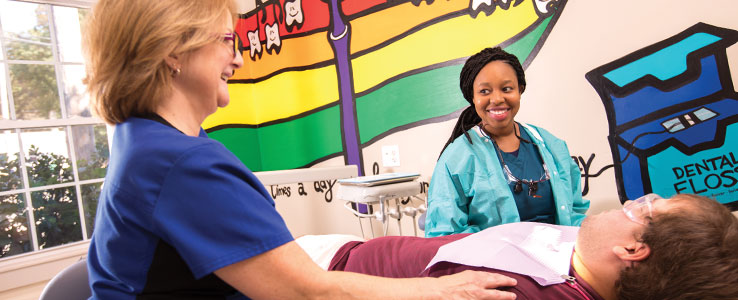In the New River Valley region, one out of six people don’t have access to regular transportation. Additionally, the area isn’t abundant with medical or dental providers, and many practices don’t accept Medicaid, specifically in the dental field.

School Program Manager, Community Health Center of the New River Valley
To help address these issues, the Community Health Center of the New River Valley (CHCNRV) launched a school-based health center to bring high-quality medical and dental care directly to students, staff and faculty in the New River Valley area in August 2021.
We spoke with CHCNRV’s School Program Manager, Erika Slagel-Perry, LPN about bringing teledentistry services to schools, and how she hopes these services become more common.
“We’ve found that a lot of parents can’t take time off of work to take their children to routine dental appointments without the risk of getting fired,” Slagel-Perry said. “This program really helps expand what we can do to meet kids, and even teachers, where they are. I’ve met some teachers who haven’t had oral hygiene appointments in years, but because we’re there in the school, they’re able to be seen during teacher workdays or during their planning period.”
Teledentistry may seem counterintuitive as it, unlike other types of virtual care, involves more than a patient and provider talking over a computer or phone.
The CHCNRV sends a mobile dentistry van to the schools where students see a dental hygienist and dental assistant for their teeth cleanings. After the appointment, the student can return to the classroom.
The dental assistant and hygienist will then upload the patient’s records into CHCNRV’s electronic health record and a dentist, who is at a different location, will later review the information to determine if the patient needs to receive further care.
Teledentistry to treat pain
The most impactful way the school-based health center is using teledentistry is with an intraoral camera in emergency situations.
If a student goes to the school nurse with oral pain, the school nurse would do a quick evaluation, and use the intraoral camera to take photos of the area of concern. The photos are then downloaded to a secure software program and from there, an on-call dentist from the CHCNRV and the nurse can have a live-stream televisit which allows the dentist to see the problem areas in real-time. The dentist can then prescribe antibiotics and schedule an appointment for the student to be seen in-person.
“The point is to get the student out of pain as quickly as possible,” Slagel-Perry said. “We all know that students can’t learn if they’re in pain, so we need to address this as soon as we can.”
Within the next year, the CHCNRV will be adding two new school systems to their program. With this addition, they will be serving 16 schools within the New River Valley and are looking to implement more telemedicine products for medical appointments.
Looking forward
Slagel-Perry feels that while teledentistry isn’t yet widely practiced, it could be in the near future. She hopes to see these services used in nursing homes and assisted living placements, where patients need care but face similar issues with access to transportation and scheduling an appointment to see a doctor in person.
While a lot of education and time went into training dentists on the software they use for conducting a virtual exam, the CHCNRV is demonstrating how safety net providers can get creative with leveraging telehealth technologies to meet patients where they are.

